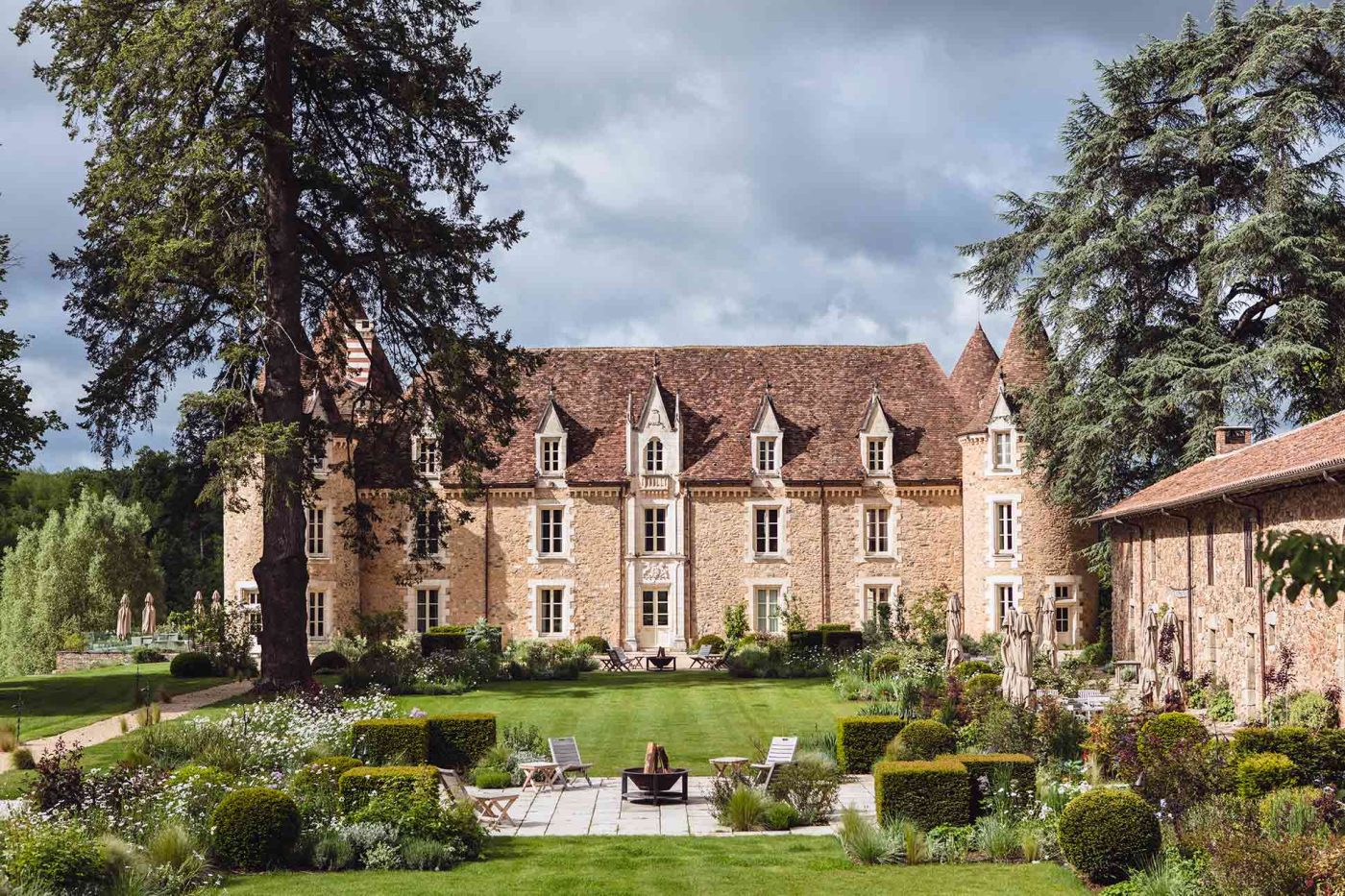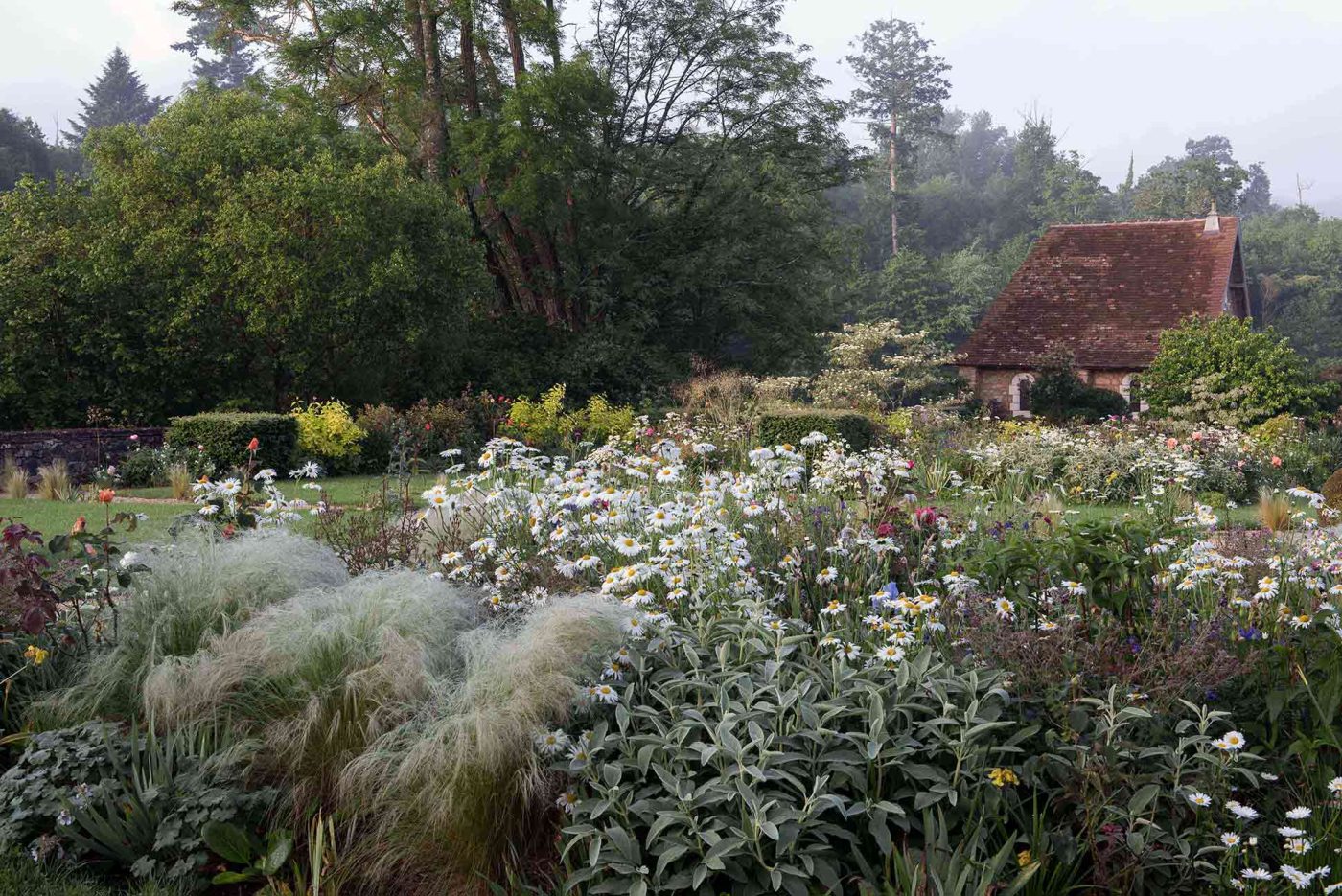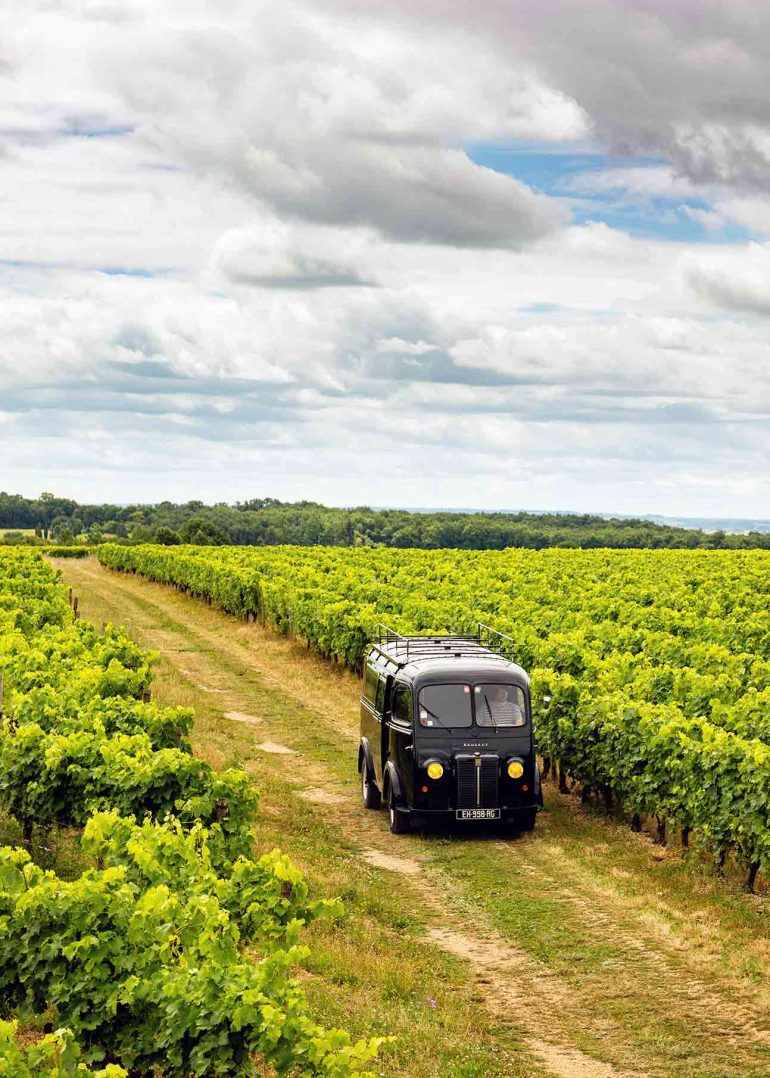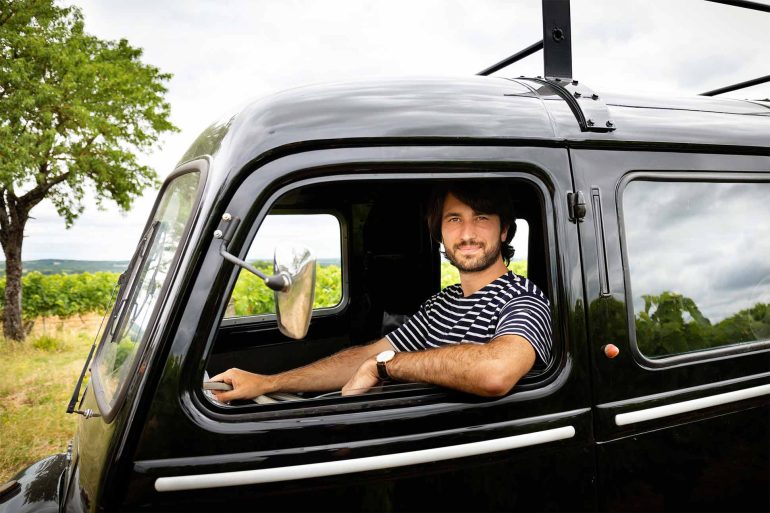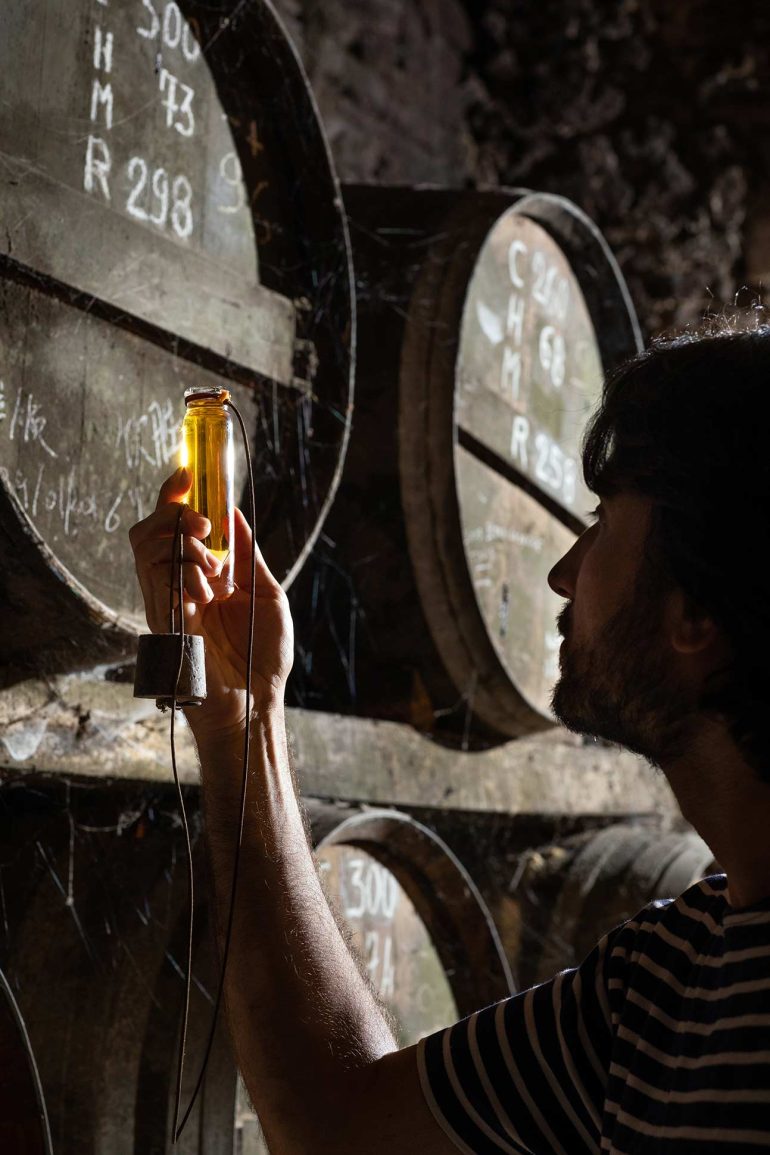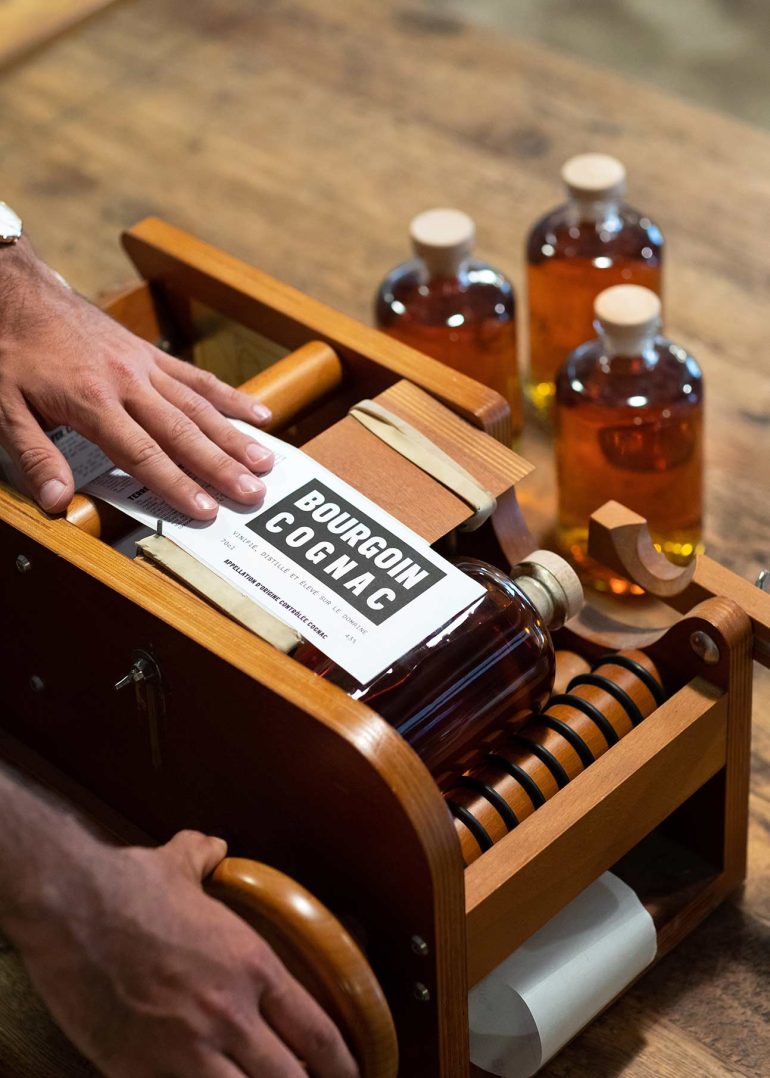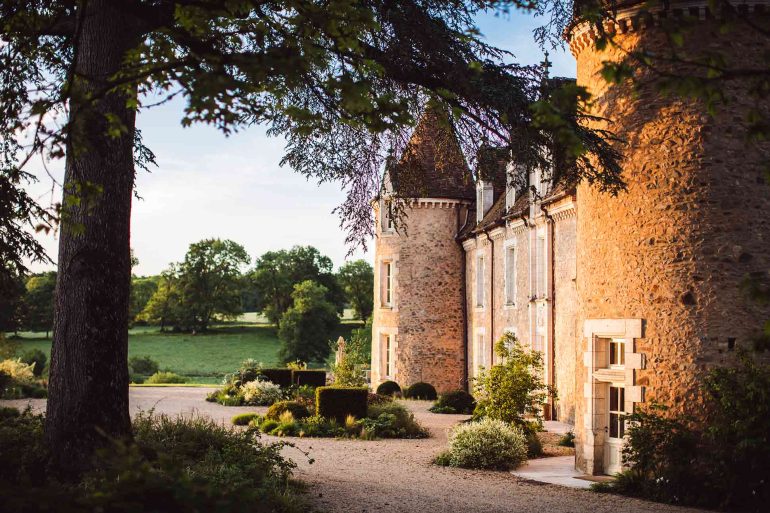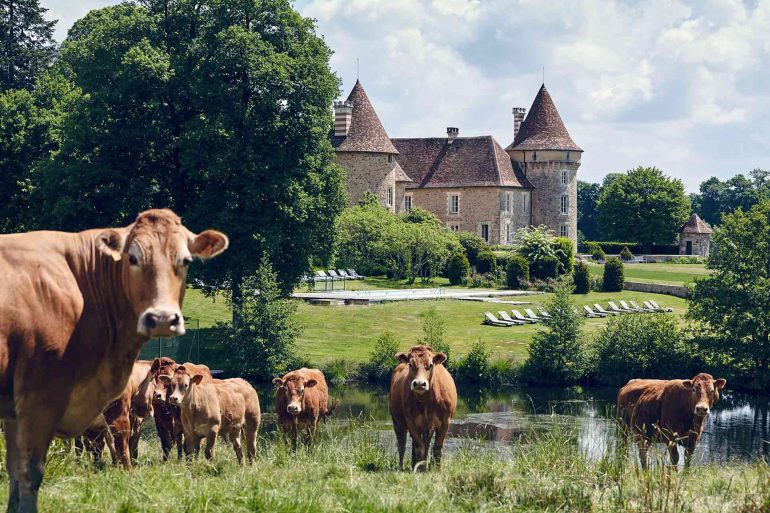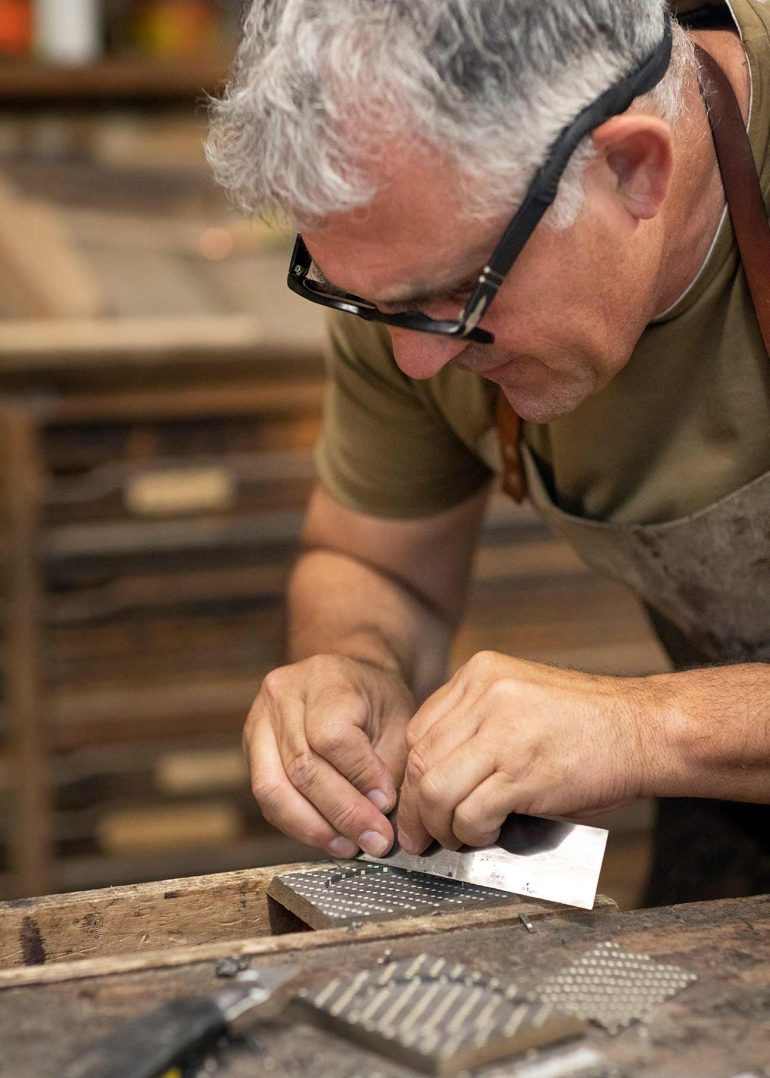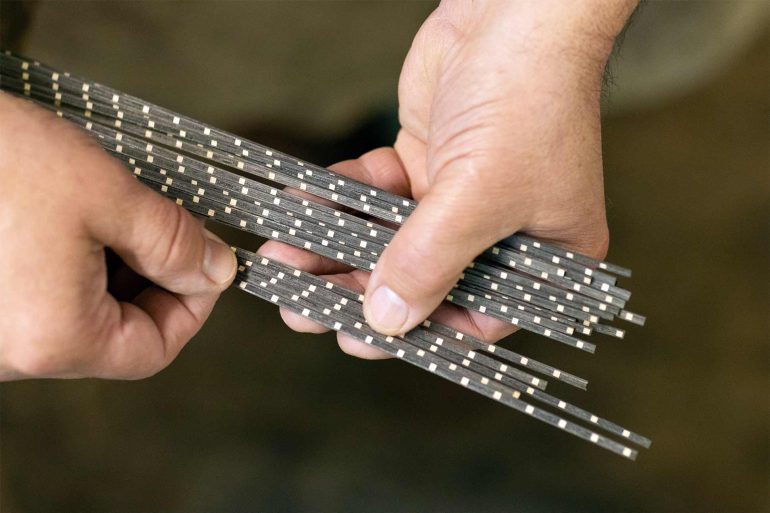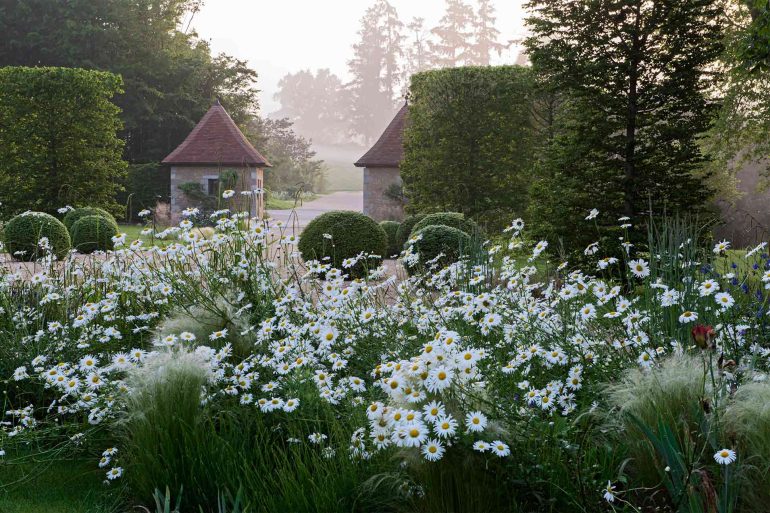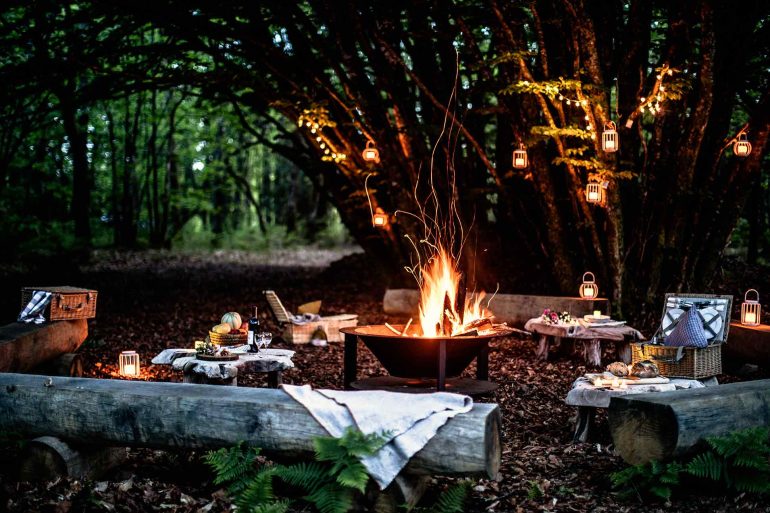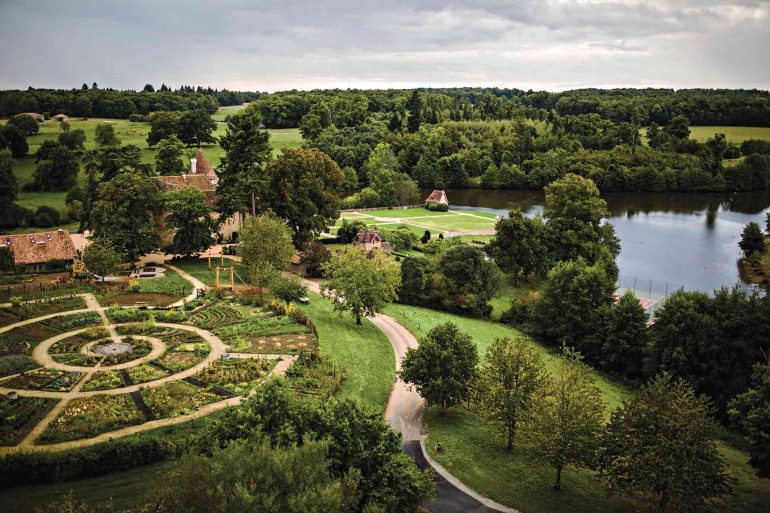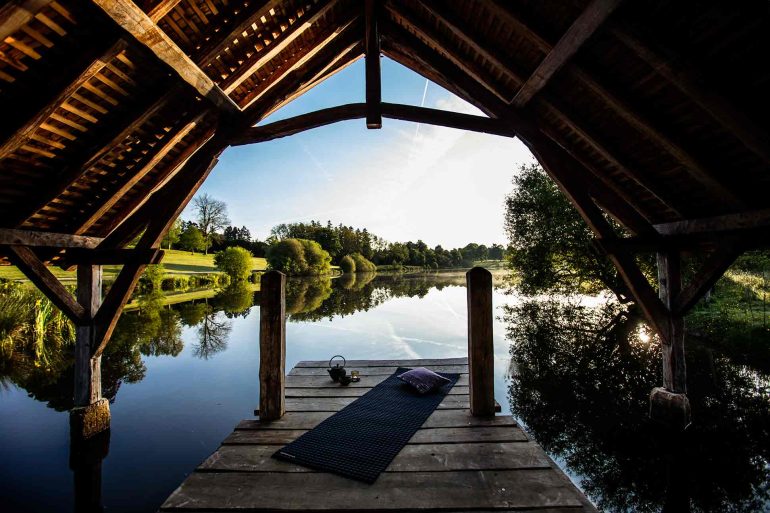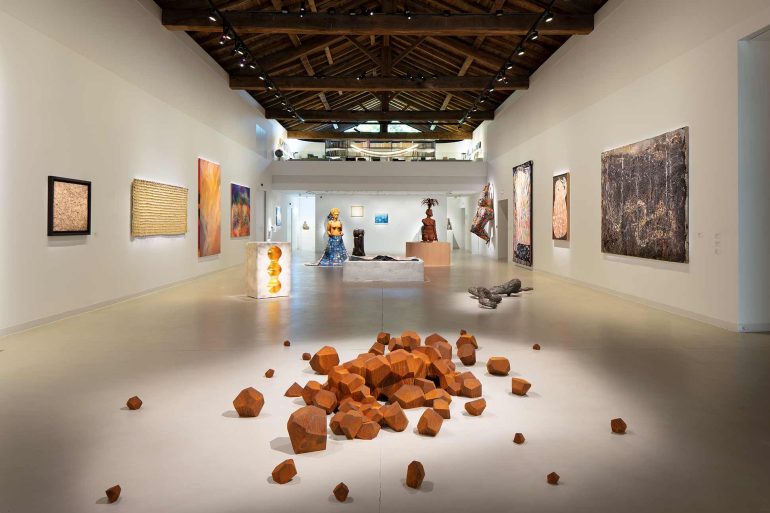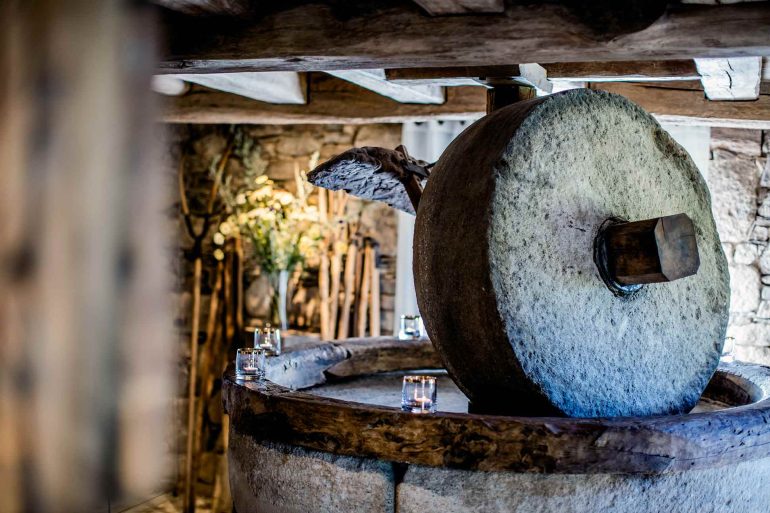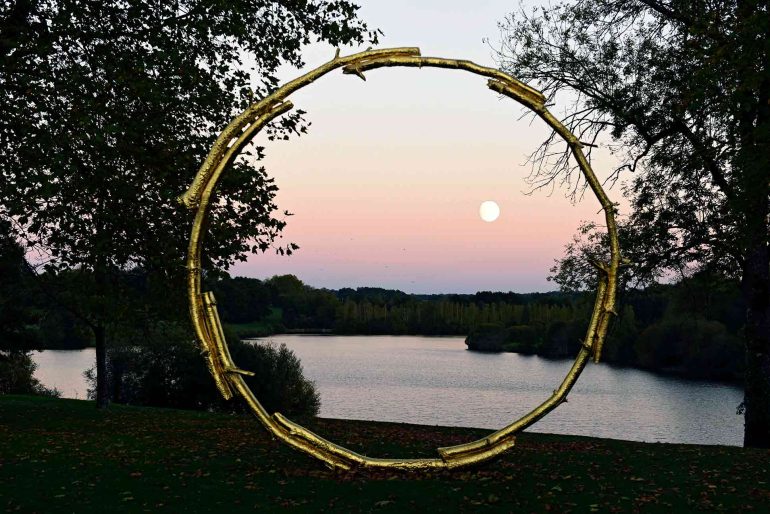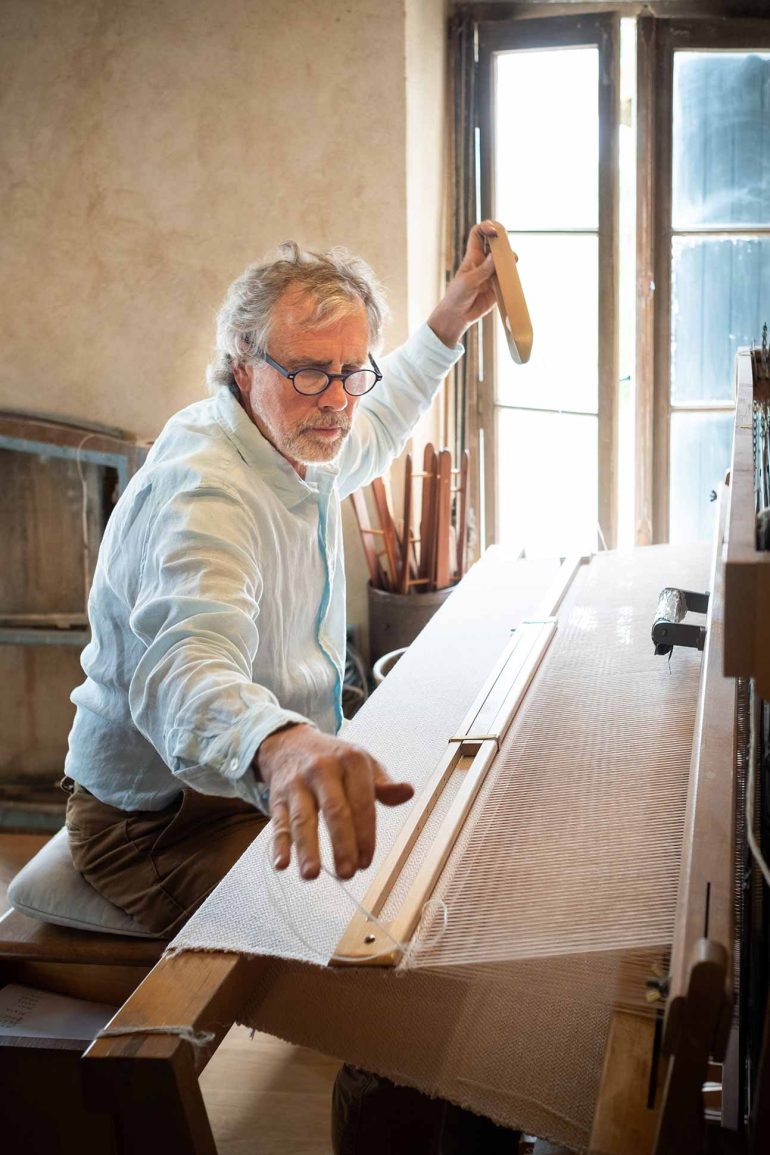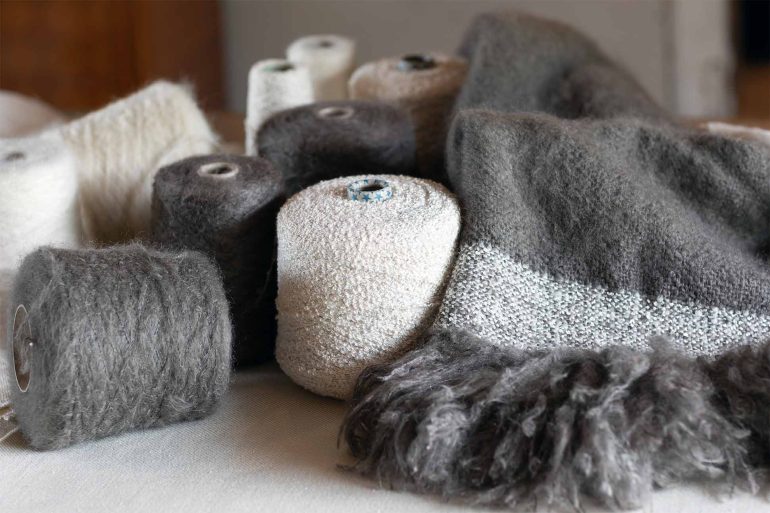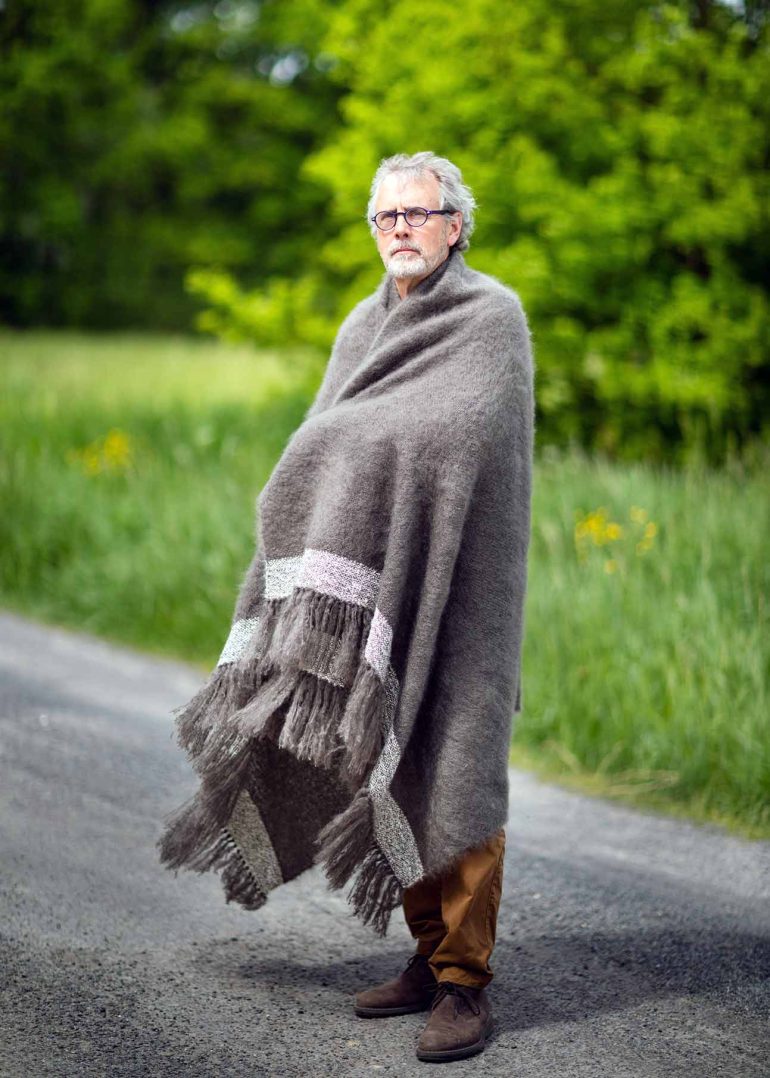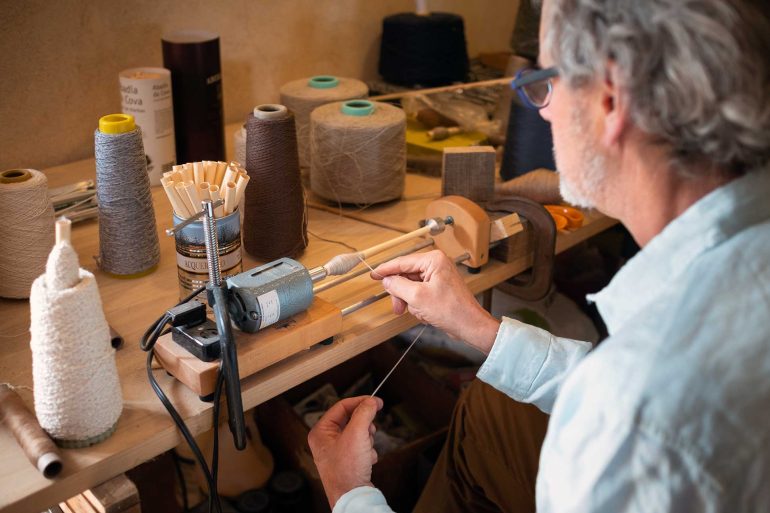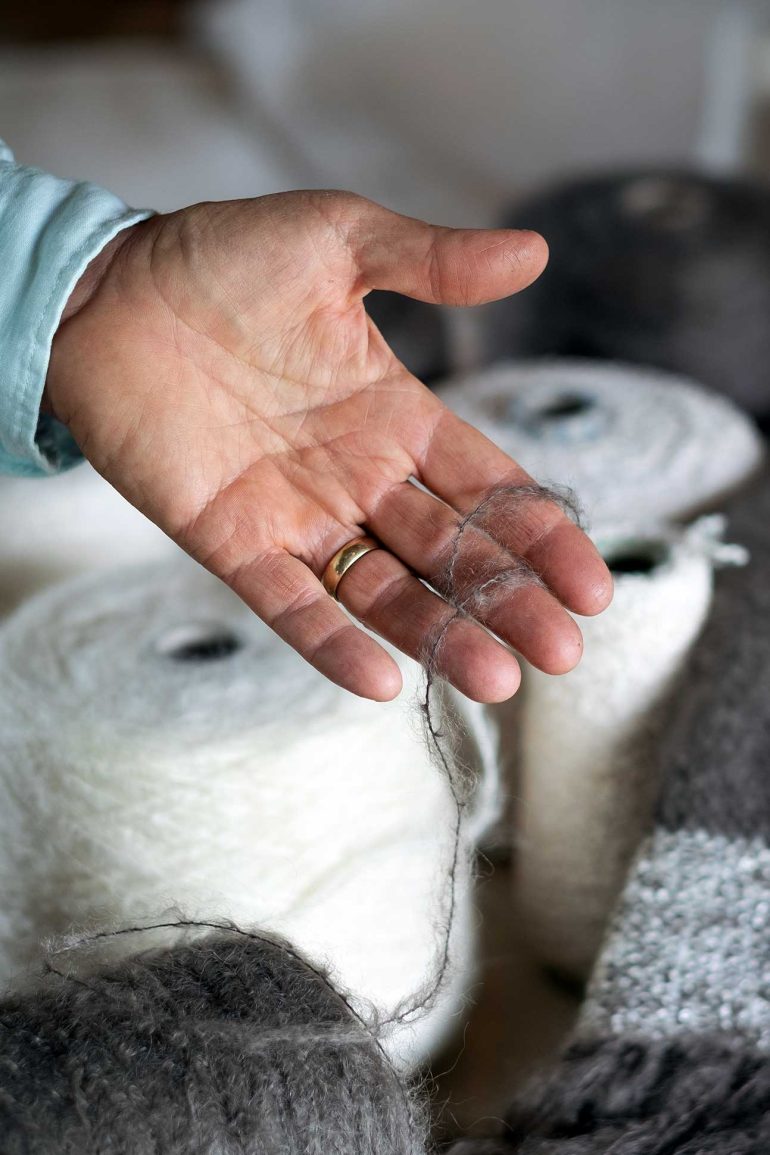Dreading a future in which artificial intelligence will overtake human ingenuity in the world of art, Zack Cahill travels to the small town of Massignac in southwestern France. Craftsmanship is still valued here, and from the base of the art-filled Domaine des Etangs, it’s easy to visit local makers and shakers.
What do you think: will a machine ever be able to write a song or a poem as well as a human? What about those obnoxious AI portraits currently clogging up your Instagram feed? The ones that steal artists’ work to spit out a flattering image of you with unsettlingly wonky hands. Will there come a time when they can truly be considered art?
It’s not exactly a novel question. From the industrial revolution to self-checkout machines at the supermarket, the threat of being pushed out of the job by rampant technology has been present for a long time. I worry about it. If you do, too, you could do worse than travelling to southwestern France, where hand-made artistry continues to be awarded a label of pride.
Flying to Limoges, a postbox of an airport serving Massignac, I’m greeted by a security dog without a handler. The dog seems to be completely self-managing, sniffing vaguely at each arriving traveller, then, satisfied, wandering off behind a counter, pendulous testicles swaying: welcome to France.
This is the Charente region in the South West, to be exact. It’s a part of the world where the touch of a craftsman’s hand is still highly sought after and richly remunerated.
To really immerse yourself in the region around Massignac, you best bed down at the Domaine des Etangs, a 13th-century chateau surrounded by lavish chalets. The property provides a whistle-stop tour of the finest local artisans, all of whose work is prominently represented at the chateau.
We start in the Cognac region, with a taste of – you guessed it – cognac. The Bourgoin family estate, which is quiet apart for a few scuttling cats, is in the village of Tarsac. It’s French in an almost Disney-esque way… All we need to complete the image is for someone to burst into a song. Indeed, it feels like that’s about to happen when, as we enter the courtyard, the second-floor French windows (or maybe here they’re just windows) burst open and Frederick Bourgoin, son and heir to the Bourgoin cognac legacy, appears in dusty overalls, handsome, long-haired and smiling from ear to ear. He’s busy at work but tells us his equally photogenic wife Rebecca will be along soon. She appears as if conjured, in radiant green, to give us the tour.
This modest estate within easy reach of Massignac is run by a handful of dedicated craftsmen and women adhering to traditional methods. The cool stone building houses ancient wheels for grinding grapes and antique-looking kit that’s partly for show and partly functional. The brandy is rich and complex, made from a blend of roots Frederick’s ancestors concocted to resist the destructive phylloxera fly when they realised praying to the moon was doing nothing to improve their yields. Now, Bourgoin has 150 Michelin chefs to call patrons. But it remains a small batch, family-run enterprise. To this day, the phone number on the bottle is Frederick’s. Commerce and artisanship are in perfect harmony – hook it to my veins.
“Any creative person dreams of the artisan’s life. We don’t want fame, just enough recognition to make a living from our work. To be able to focus, at the exclusion of all else, on cultivating greatness in our own, narrow field”
Boosted by a mild brandy buzz and heartened by Rebecca and Frederick’s love for their craft (and Gallic displays of mutual lust), I move on.
How much does a good cabinet from Massignac set you back, do you think? How about a nice cigar humidor? If you want the best you’re looking at a cool €150,000. What if I told you it was made from oak blackened by 200 years in a swamp? Yeah, me either. But if I were the prime minister of Japan, for instance, I’d take it. And he did. That’s the kind of clientele Thierry Drevelle services.
The master cabinet maker works out of a tall, narrow building, down a meandering narrow street, and up a creaking staircase. He’s ensconced in the platonic ideal of a spacious workshop, high rafters, exquisite pieces in various states of assembly, and the smell of aged wood and varnish.
Drevelle is a modest, middle-aged man without a lick of English. Together with his interpreter, we stroll the workshop, its walls adorned with newspaper clippings, photos of Drevelle beaming next to celebrities and presidents or posing in a magazine ad for Nescafé. It’s all evidence of a life lived at the very height of his craft.
Way back in the internet’s early renaissance period, say 2006, a nascent YouTube did a roaring trade in video compilations of people being good at their job. You’d see scenes of someone flipping burgers or stacking shelves or cleaning windows with near-inhuman speed and accuracy. We have an innate awe of mastery, even for tasks we have no real understanding of. In Massignac, I feel that. I know nothing about what Thierry does but the sheer skill on display is no less inspiring. I came here worrying about automation, fearing a world where mass production obliterates humanity and guys like Thierry never get to sell 150-grand humidors to Japanese presidents. But this kind of craftsmanship has a value that no machine can ever replicate. You’re not just buying a cabinet, you’re buying a tiny piece of a man’s life spent becoming a master.
Any creative person dreams of the artisan’s life. We don’t want fame, just enough recognition to make a living from our work. To be able to focus, at the exclusion of all else, on cultivating greatness in our own, narrow field. It’s harder now. Most of the creators I know are ‘slashies’: actors-slash-personal-trainers. Writers-slash-receptionists. Musicians-slash-baristas. It’s a strange paradox… We, the public, have never consumed more art while valuing it less.
There’s a highly influential essay called 1000 Raving Fans by called Kevin Kelly. His thesis is simple: don’t worry about fame. Put your effort into reaching a thousand people who will buy anything you produce. If those people spend 100 dollars a year on your work, you’re golden. We see that philosophy in action with the rise of online publishing models like Substack and Patreon, where writers and creators are going directly to their audience without the help of old gatekeepers like publishing houses or distributors. It’s all very up-by-the-bootstraps, American hypercapitalist. This is to say, it works great for a few, but the jury’s still out on whether it’s really a viable solution. At my most pessimistic I fear we’re moving to a world where creative activities will only ever be hobbies. We’ll pursue them because we’re compelled to, but only as slashies. I wonder if the next Picasso or Jimi Hendrix will make it out of their bedroom or garage.
“The textiles are like the reverse of a Monet watercolour, in that they become more detailed and exquisite the closer you get to them, almost fractal in their endless complexity”
No one encapsulates the self-actualised creative, and the idyllic French lifestyle to boot, like Sam Kasten. He’s a droll Iowa transplant, a graduate of the famed Black Mountain College and purveyor of classic couture textiles since the 1970s. Kasten cut his teeth under the great master weaver Andy Oates at Nantucket Looms, on the rain-battered island off Cape Cod. ‘Rich people would arrive on helicopters just to buy some fabric from us’, says Sam at his home-slash-workshop in the village of Vanzac, just over an hour southwest of Massignac.
His work uses the very finest raw materials, from silk to cashmere, to weave simple but elegant patterns. It’s nothing too showy: after all, as Sam says, ‘if you’ve got a Picasso on the wall, you don’t want to detract from it’.
He shows us around his workshop while his wife and manager Merry (British, glam) makes tea and answers the questions Sam can’t. Who do they sell to? ‘Hotels. Yachts. Jets. Embassies’. The workshop is dominated by two looms. They’re both huge, like church organs, with foot pedals and arcane levers and sliding parts. The textiles are like the reverse of a Monet watercolour, in that they become more detailed and exquisite the closer you get to them, almost fractal in their endless complexity. Going at full clip, Sam can produce about three metres a day. Those three metres a day bought him this place, this life.
The workshop sits across a swimming pool from Sam and Merry’s house. A beautifully appointed farmhouse with a kitchen that would give Nancy Meyers multiple orgasms. A yellow Labrador jumps in and out of the pool living his best life. ‘He escapes a lot’ says Sam of the dog. ‘He’s got a girlfriend around the corner. We always find him at the bakery. I think they give him croissants’.
Sure enough, once I’ve said my goodbyes and driven away, I watch the dog sail over a fence and scarper down the lane toward his lover or his next pastry.
On my final morning in Massignac, I make my way to Limoges to visit the Bernardaud Museum, home of the world’s finest porcelain. The factory has been the leading light in fine china for 160 years. This is a town where broken ceramics are used to fill potholes. The streets are literally paved with china.
I’m taken through the whole exacting process from start to finish. I see each part of the journey like a time-lapse camera, the silt and paste formed into grey, impossibly fragile dinnerware, then fired and decorated and made perfect. And if it’s not perfect, if some barely visible piece of dust somehow makes it into the final piece, you can buy it here at a knockdown price. These imperfect, bastard pieces are called seconds. Fancying I might take an espresso cup home to my partner, I check the heavily discounted price. It’s €150. Maybe not today.
The best will always be expensive. That’s how it should be. Craftsmanship and excellence must be valued if it’s to be preserved. Maybe I can’t afford the espresso cup, or indeed the 150k humidor, but I can afford to keep an eye on creators from Massignac and around the world that speak to me, and support them whenever possible. It’s the only way to keep them going. While I may not come home with an espresso cup, I do return with a little more hope for our collective creative future. That’s a rather nice souvenir, too.
Photography by Claire de Virieu, Arthur Pequin and courtesy of Domaine des Etangs


